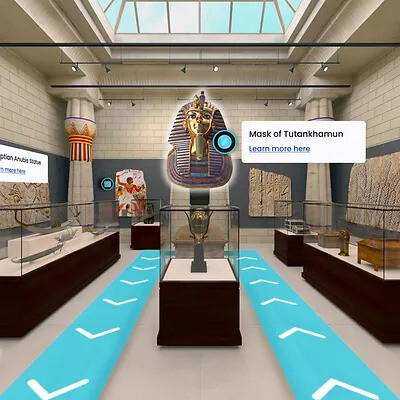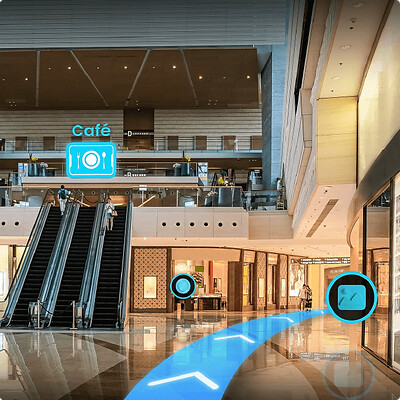Late last month, ARway, a company specializing in AI-powered augmented reality experience creation, unveiled their new technology to convert 2D floor plans into 3D digital twin floor plans. The company hopes to eliminate the need for costly scanning and other reality capture measures to create their AR experiences.
ARway, which was formerly part of the Nextech Corporation but officially spun off in October of 2022, provides AR experiences for indoor venues which feature large numbers of people moving about, such as sports venues, universities, retail locations, and more. While the focus on something resembling a ubiquitous “metaverse” has certainly waned, ARway fits into that mold by providing value overlaying digital assets – this can include things like directions, sales, additional information, and more – into the physical environment.
They’ve continued to evolve their product over the last year or so as well, including last year when they started to implement lidar scanning into their workflow, though this latest announcement does sort of go in the opposite direction.
That being said, it’s not at all difficult to see where the value can come from this latest announcement, specifically around the ability to create these 3D digital twins from 2D floor plans. (This idea is also something we've seen in the construction industry around blueprints, as well.) Perhaps most impressively, ARway indicates that they are able to incorporate pinpoint locational accuracy and scale into the creation of these models. The company says that their artificial intelligence powers the accurate alignment of a floorplan, which “eliminates the need for manual scaling of the floor plan in the Creator Studio, enabling creators to place AR content with pinpoint accuracy in the real environment.”
Given that, for the most part, the users of these AR experiences are going to be moving throughout a given space, it’s crucial for their location and position to be consistently precise. ARway notes that their app employs a “range of sensors in the user’s devices,” allowing for that location and orientation to be consistently tracked. They’ve also “gamified” drift, encouraging users to scan nearby access points and monitor positioning to ensure accuracy is maintained.
This development is significant to me in a couple of ways, the first being that “metaverse” piece. We’re at the point where it’s hard to even type out that M-word because it’s such a loaded term at this point, but for whatever setbacks we’ve seen there is still clearly a use for overlaying digital assets over the physical environment. We see that in the industrial space, and it works in this context too.

Think about going through a store and knowing what you need but having no idea where to find it, and also being unable to find an employee for assistance. Imagine, instead of wandering around hoping you luck into finding either the product or some help, you could simply punch the object into an app, bringing up a map on your phone which can be overlaid the real store with directions right to where you’re trying to go.
This can be used for things like finding restrooms or certain concessions at a sporting event or concert, or providing assistance to new students at a high school or university. The use cases here are evident, and if owners-operators of these venues and campuses can create these just with 2D floorplans rather than needing to pay for scans and processing, we could see far greater adoption in this realm moving forward.
I’d also speak to the idea that this could eliminate the need for these reality capture methods like lidar. I don’t think ARway is saying that they are making that technology obsolete, because they very obviously are not. For something like these use cases of simply assisting customers or whoever else is in a venue to move around, perhaps providing information along the way, this type of map creation makes plenty of sense. It’s, of course, not going to provide the type of digital twin providing immense information to owner-operators, though. They’re entirely different use cases, and the lidar scanners and other hardware is going to be necessary for those.
All that being said, while there is no consensus about the next stages of advanced visualization, speaking with those in that space it becomes clear that many see mobile AR as being that stepping stone for wider adoption. We’ve seen a proof of concept with this, too, back in 2016 with the massive popularity of Pokemon Go. Anything that makes it easier to create these AR capabilities will enhance experiences at any of these types of venues.
In early March when ARway first filed these patents, CEO Evan Gappelberg said in a press statement, “We are excited to announce this first in a series of planned patent filing for ARway's digital twin technology. We believe that this technology will become a cornerstone of our ARway platform and help us further establish the Company as a leader in the global indoor positioning and indoor navigation market.”






